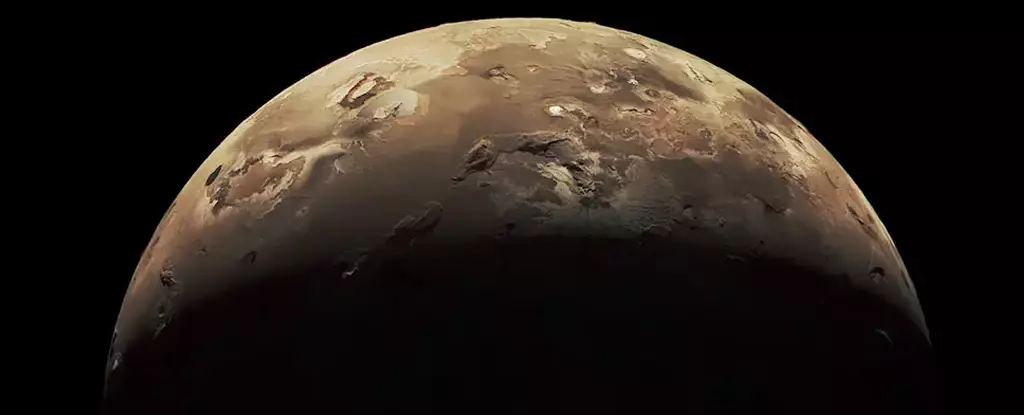NASA’s Juno Spacecraft Provides New Io Insight
NASA’s Juno spacecraft recently embarked on a journey to capture detailed images of Io, the most volcanically active world in our Solar System. During a close fly-by on Saturday, Juno spotted plumes of volcanic activity erupting from Io’s surface in real-time. This marked the second in a set of two close fly-bys, bringing humanity’s closest encounters with Io in the last 22 years and offering new insights into the fiery phenomena that lie beneath its surface.
Io, often referred to as a “tortured moon,” experiences extreme gravitational forces that continually push and pull it in various directions. On one end, Jupiter’s massive gravitational pull drags Io toward the planet, while on the other end, the neighboring moons of Europa and Ganymede exert their own gravitational forces. This constant tug-of-war creates tremendous friction across Io’s entire surface, leading to increased volcanic activity.
Juno Spacecraft Reveals A World of Volcanic Fury
 With approximately 400 active volcanoes on its surface, Io’s volcanic landscape is unlike anything found on Earth. The Juno spacecraft captured a close-up image on February 3, showcasing erupting gas spewing into space. These volcanoes are capable of expelling fountains of boiling-hot lava, often reaching heights of dozens of miles, dwarfing even the largest active volcano on Earth, Mauna Loa.
With approximately 400 active volcanoes on its surface, Io’s volcanic landscape is unlike anything found on Earth. The Juno spacecraft captured a close-up image on February 3, showcasing erupting gas spewing into space. These volcanoes are capable of expelling fountains of boiling-hot lava, often reaching heights of dozens of miles, dwarfing even the largest active volcano on Earth, Mauna Loa.
Since 2016, the Juno spacecraft has tirelessly orbited Jupiter every 38 days. Currently in an extended mission phase, Juno aims to explore the full Jovian system, including Jupiter, its rings, and its moons, until September 2025. By conducting these close fly-bys, Juno mission scientists hope to gain a more profound understanding of the underlying mechanisms driving Io’s explosive volcanic activity.
The Clash of Theories According To Juno
While Juno’s data provides invaluable information, scientists are still left grappling with two competing theories about the origins and nature of Io’s intense volcanism. One theory proposes the existence of a global magma ocean beneath the moon’s surface, while the other suggests that the moon’s solid core of hot metal is responsible for the volcanic activity. With continued analysis of the data collected, it is hoped that the answer to this volcanic puzzle will unveil itself in the coming months.
NASA’s Juno spacecraft has granted us a rare glimpse into the volcanic world of Io, capturing astonishing images of erupting plumes in real-time. This historic close fly-by has shed light on the torturous gravitational struggles faced by Io, causing it to become a hotbed of volcanic activity. With the Juno mission now in its extended phase, scientists are eagerly awaiting further analysis of the collected data to unravel the mysteries surrounding Io’s volcanic landscape and deepen our understanding of the dynamics at play within our Solar System.
For the latest news on Space click here


Leave a Reply